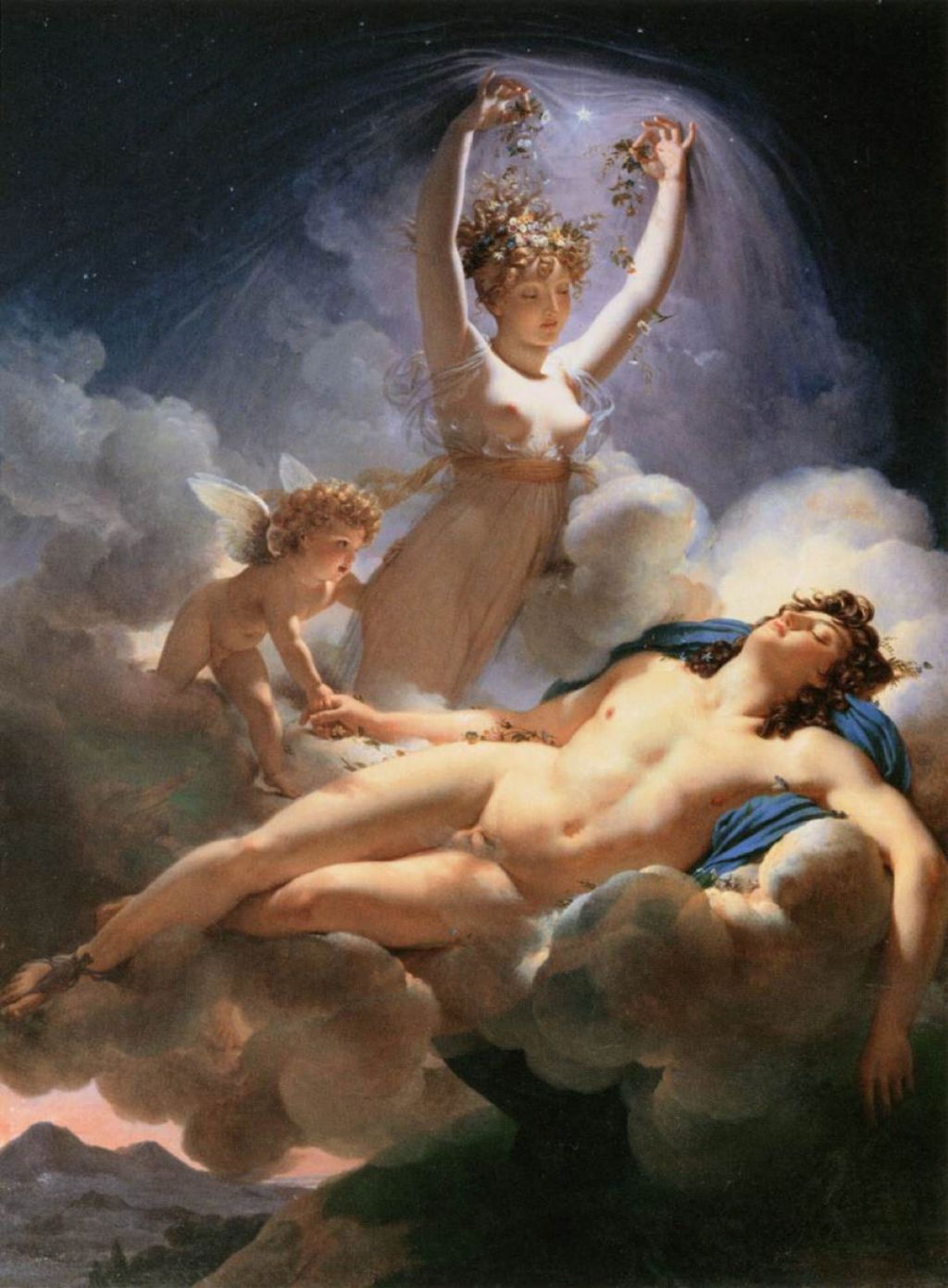Some goddesses get all the best jobs, and I can’t think of any better than bringing the dawn light of a new day, the task of Eos (Greek Ἕως), known better in her Roman guise as Aurora. As the daughter of the Titans Hyperion (bringer of light) and Theia (divine), she too is a Titaness, who’s the mother of the Winds Zephyrus, Boreas, Notus and Eurus, and several other lesser-known deities. Each morning she rises in her home at the edge of Oceanus, the sea, as would have been apparent to many Greeks, with her rosy fingers, throws open the gates of heaven, and so enables the sun to rise.
She, and a couple of the myths in which she’s involved, have inevitably been popular with visual artists, resulting in some magnificent romantic fantasies. Sadly some of these are on ceilings which are very hard to photograph well, but this selection of paintings should do her justice.
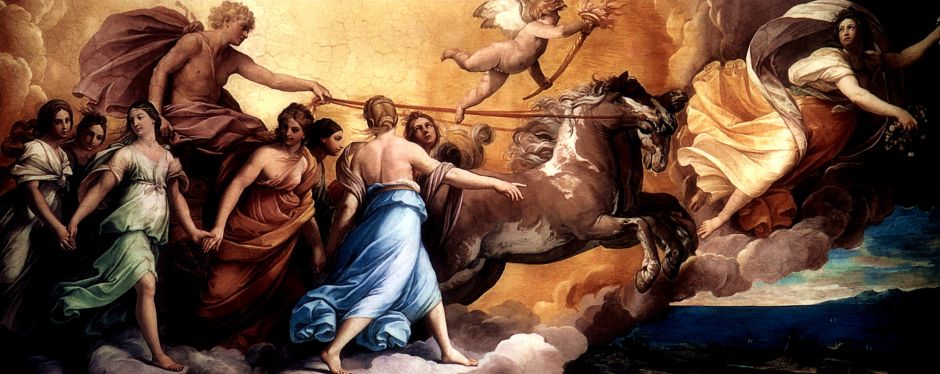
Guido Reni’s fresco of Aurora in the Casino Rospigliosi Pallavicini in Rome, from about 1612-14, shows her in a traditional role, leading the horses of the sun chariot as they disperse the darkness of night. Her robes are saffron, in accordance with Homer’s description, and she is followed by a winged putti bearing a torch.

Jean-Honoré Fragonard tackles a similar theme in very different style in his Aurora Triumphing over Night from about 1755-56. Nyx has fallen asleep under the dark curtain of the night, as rosy-fingered dawn looks down at her. Soft billows, curled locks and roses are the order of the day.

Evelyn De Morgan painted the goddess at least twice, in very different contexts. In her early Aurora Triumphans from about 1876, Aurora reclines at the lower right, the shackles of the night shown as roped roses. At the lower left, Night is flying away in her dark robes. Above them, three winged angels resplendent in their golden tunics sound the fanfare bringing day. Aurora is triumphant in dispelling Night.
This painting has an interesting history. First exhibited at the Grosvenor Gallery in London, it seems to have gone into a private collection until coming onto the market in about 1922. At that time, De Morgan’s signature had been overpainted with that of Edward Burne-Jones. It was on the strength of that that it was purchased for the Russell-Cotes Museum in Bournemouth, where it now is, unveiled as one of Evelyn De Morgan’s paintings instead.

Almost twenty years later, in 1895, De Morgan returned to the goddess in Eos, a full-figure portrait showing her resplendent with red wings, and visual references to her oceanic home and roses. Unusually, she is pouring a stream of water from a jar, as if associated with a river.

William-Adolphe Bouguereau’s portrait of Aurora from 1881 shows her, as you might expect, largely unclad, with the dawn sky behind.

She also features in one of Henri Fantin-Latour’s unusual fantasies from late in his life. The Palace of Aurora from 1902 is an ethereal painting of a motif which might have come from the older artists of the Royal Academy in London. Aurora is here being disrobed by the personification of night, those diaphanous robes being lit by the red of the sunrise.
Eos plays a role in one of Nicolas Poussin’s most elaborate mythological paintings, A Dance to the Music of Time from about 1634-6.

This shows four young people dancing, who are sometimes interpreted as being the seasons, but this is probably not the case: they are most likely Poverty (male at the back, facing away), Labour (closest to Time and looking at him), Wealth (in golden skirt and sandals, also looking at Time), and Pleasure (blue and red clothes) who fixes the viewer with a very knowing smile. Opposite Pleasure is a small herm of Janus, whose two faces look to the past and the future. Above them, in the heavens, Aurora precedes Apollo’s sun chariot, on which the large ring represents the Zodiac. Behind the chariot are the Horai.
There are several myths about her numerous relationships, with the Trojan prince Tithonus, Ares, Orion, Cleitus, but most of all Cephalus. Accounts of her affair with Cephalus differ, but a common thread is that he was an Aeolian, already married to Procris, who was kidnapped by Eos when he was out hunting. In spite of his apparent resistance, she conceived anything from one to three sons by him, including Phaethon and Hesperus.
Although she eventually released Cephalus to return to his earthly family, it all went badly wrong when Procris was spying on her husband to check on his faithfulness to her. He mistook her for a wild animal, threw his javelin, and killed her.
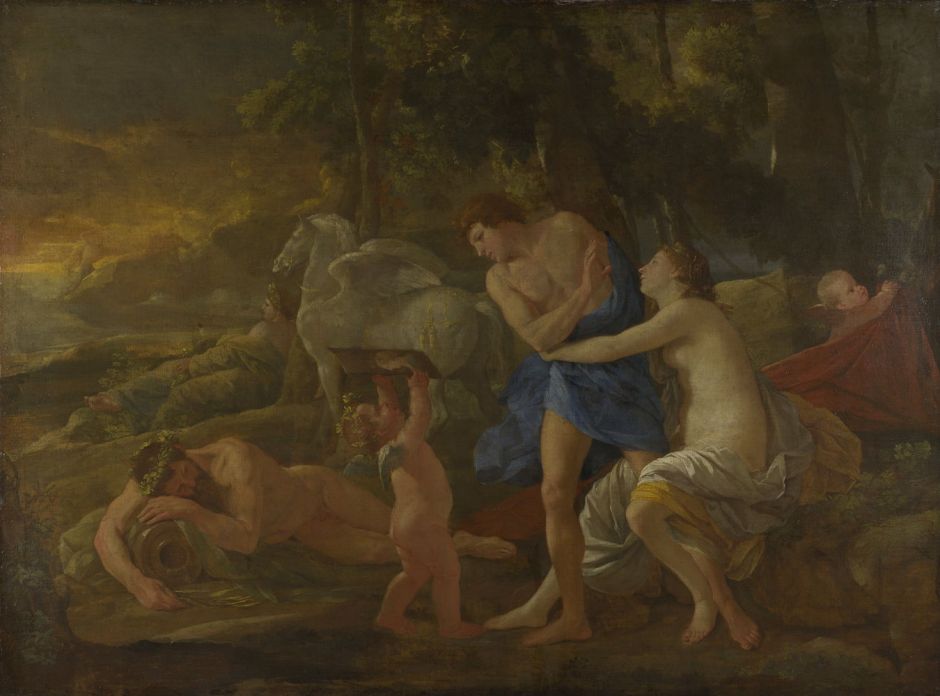
Nicolas Poussin’s Cephalus and Aurora from 1630 shows the dawn scene of Cephalus trying to avoid the obviously amorous intentions of Eos, who is seated and nearly naked. Behind Cephalus is the winged horse which draws the chariot of the dawn. A winged putto is holding up an image for him to view, presumably showing Procris, to help his resolve. At the left is a river god. Beyond the horse is another deity bearing a coronet: although difficult to see, that might be Artemis, given her association with hunting and this myth.
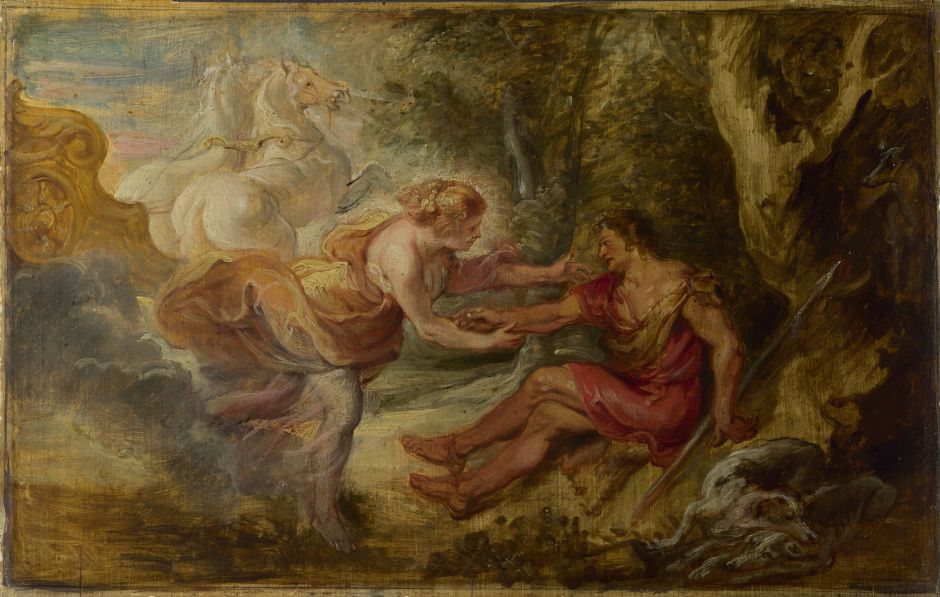
Peter Paul Rubens’ oil sketch of Aurora Abducting Cephalus was probably made in 1636-37, late in Rubens’ life, for his workshop to complete a painting for King Philip IV of Spain’s hunting lodge at Torre de la Parada, near Madrid.
In addition to showing the willing Aurora trying to persuade the reluctant Cephalus to join her in her chariot, it includes some details which are at odds with Ovid’s account of this myth in his Metamorphoses: Artemis’ hunting dog and javelin, which Ovid states Procris gave to her husband after their reconciliation, later in the story. Here they may be intended as attributes to confirm his identity.

Girodet’s Aurora and Cephalus (1805) shows the goddess abducting Cephalus at dawn, and taking him up into the sky still asleep.

Guérin’s fleshy romance Aurora and Cephalus from 1810 shows the seduction in remarkably erotic terms. His depiction of Aurora’s arms pushing up the fabric of the heavens, almost like a bridal veil, is innovative.
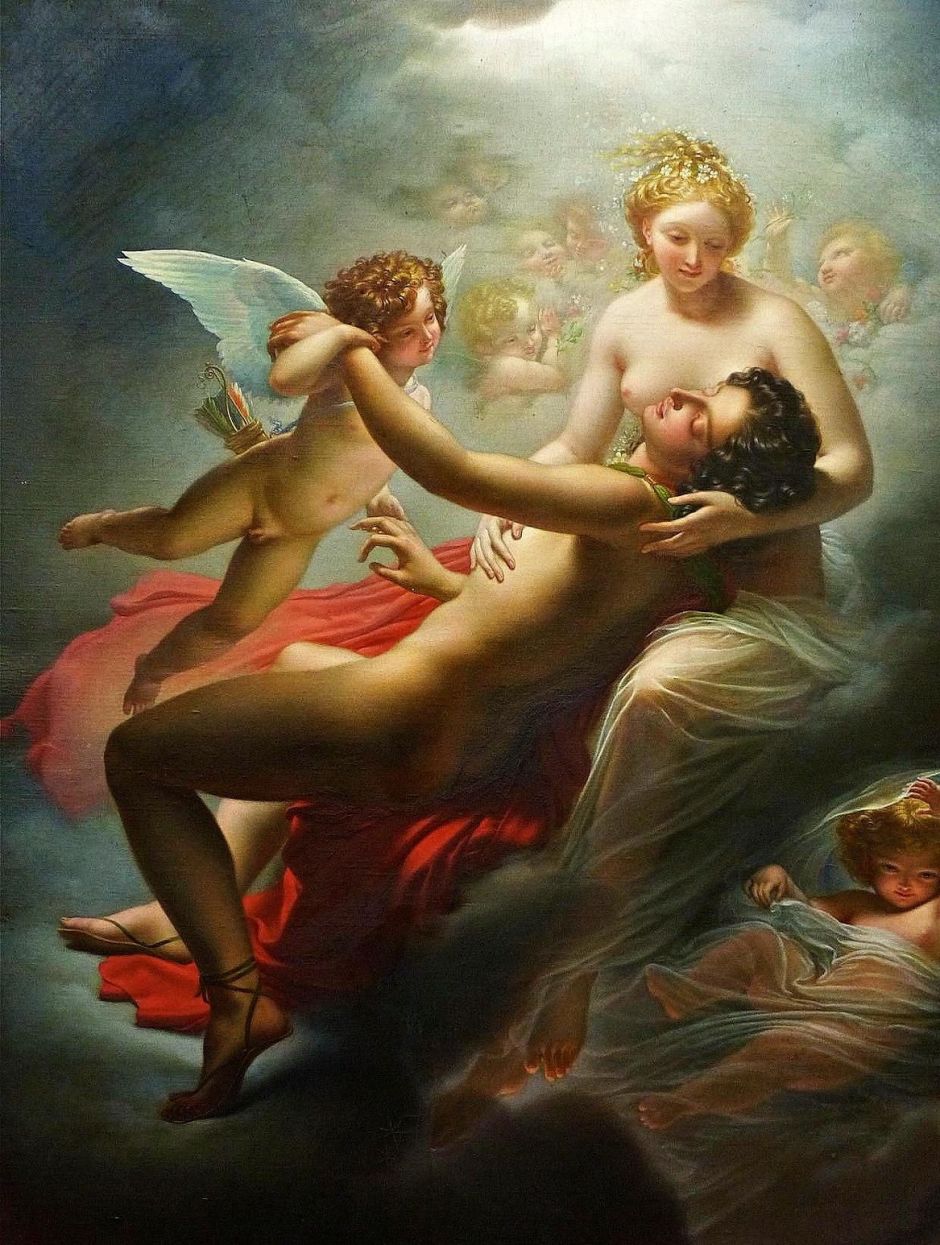
Forty years later, Pierre Claude François Delorme used a similar motif recomposed into his Cephalus Carried off by Aurora (c 1851). This features interlocking arms and embraces quite ingeniously: Aurora cradles Cephalus’ shoulder and chest, Cephalus reaches out to Cupid, and Cupid back to Cephalus.
There is nothing more seductive than a fine dawn.

